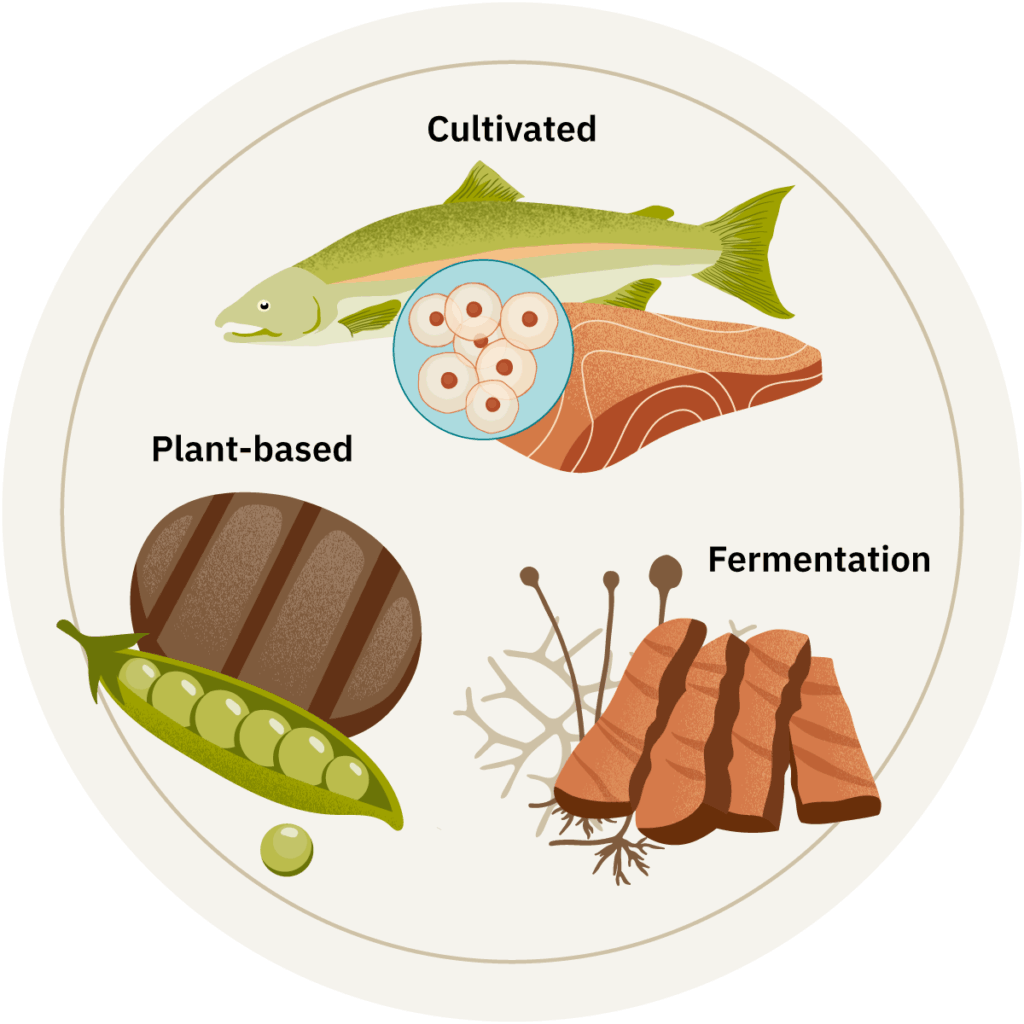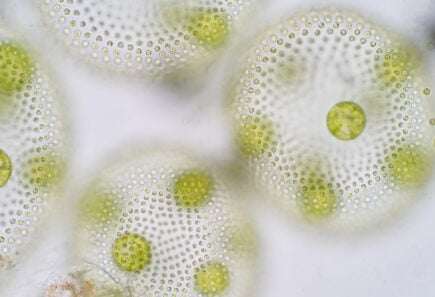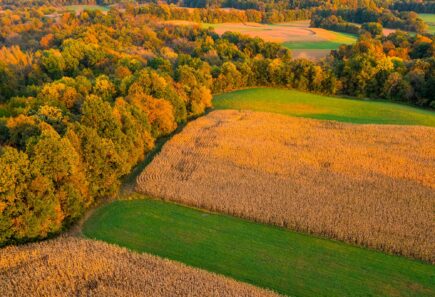
Alternative proteins 101
A quick primer on alternative proteins: what they are, why they matter, and how they can transform the future of food.
What are alternative proteins?
Alternative proteins—meat made from plants, cultivated from animal cells, or produced via fermentation—are designed to taste the same as or better than conventional animal products while costing the same or less. Compared to conventionally produced proteins, alternative proteins require fewer inputs, such as land and water, and generate far fewer negative externalities, such as greenhouse gas emissions, pollution, and other public health risks. Numerous plant-based and fermentation-derived options are available to consumers today. Other products, such as cultivated meats, remain primarily in development.

Explore alternative protein production methods

Plant-based meat
This is your guide to plant-based meat. Explore our tools, resources, and expert analysis of this field, from science to policy and markets.

Cultivated meat
This is your guide to cultivated meat. Explore our tools, resources, and expert analysis of the cultivated meat industry.

Fermentation
This is your guide to precision fermentation and whole biomass fermentation for alt protein production. Find resources, tools, and expert industry analysis here.
Alternative proteins are essential to feeding the world
Alternative proteins offer a more efficient, sustainable, and secure way to meet growing global demand for meat. Globally, meat consumption is the highest it has ever been, with meat demand projected to increase by at least 50 percent by 2050. Alternative proteins can modernize and diversify meat production in ways that massively reduce our food system’s environmental impacts and greenhouse gas emissions. They can also feed more people with fewer resources, avoid contributing to the growing threats of antibiotic resistance and pandemic risk, and free up land and ocean ecosystems for biodiversity restoration and recovery.
Our theory of change
By 2050, the global demand for meat is projected to rise significantly. If the world is to achieve our climate, biodiversity, public health, and food security goals, meat made using alternative proteins will be as essential as renewables are to the energy sector. And while campaigns focused on energy efficiency and reduced meat consumption remain valuable, it’s unlikely that enough consumers globally will consume less energy or eat less meat.
So we need to meet consumers where they are. GFI works around the world to make alternative proteins as delicious and affordable as conventional meat. By reimagining how meat is made, we can produce food that people love and usher in a more sustainable, secure, and just food future.
As an international network of organizations powered by philanthropy, GFI is uniquely positioned to accelerate alternative proteins by catalyzing and growing the entire field, creating a world where alternative proteins are no longer alternative.
For alternative proteins to grow at the pace and scale needed to achieve climate and global health goals, increased investments across the public, private, and civil society sectors are vital. Specifically, we must:
- Advance alternative protein science and build the talent pipeline.
- Secure public investments in open-access R&D, infrastructure, and workforce development, and a fair playing field that enables alternative proteins to compete.
- Support and catalyze the private sector to accelerate alternative protein innovation and scaling.
Explore how we are advancing alternative proteins

Industry
We engage across the private sector to advance alternative proteins as market-based solutions to global challenges.
Leading authorities acknowledge the need for alternative proteins
Increasingly, experts from across the fields of food security, global health, and economics are recognizing the urgent need to transition toward alternative proteins to address the biggest challenges of our time. From The World Bank and the United Nations Environment Programme to Michael Kremer’s Innovation Commission and The Center for Strategic and International Studies, a common call to action is clear: Alternative proteins are agricultural innovations that, with proper levels of government and private support, will help ensure planetary and public health.

Support our work
Our research and scientific initiatives are made possible thanks to our generous, global family of donors. Philanthropic support is vital to our mission. Connect with us today to discuss how you can help fuel this transformative work.







